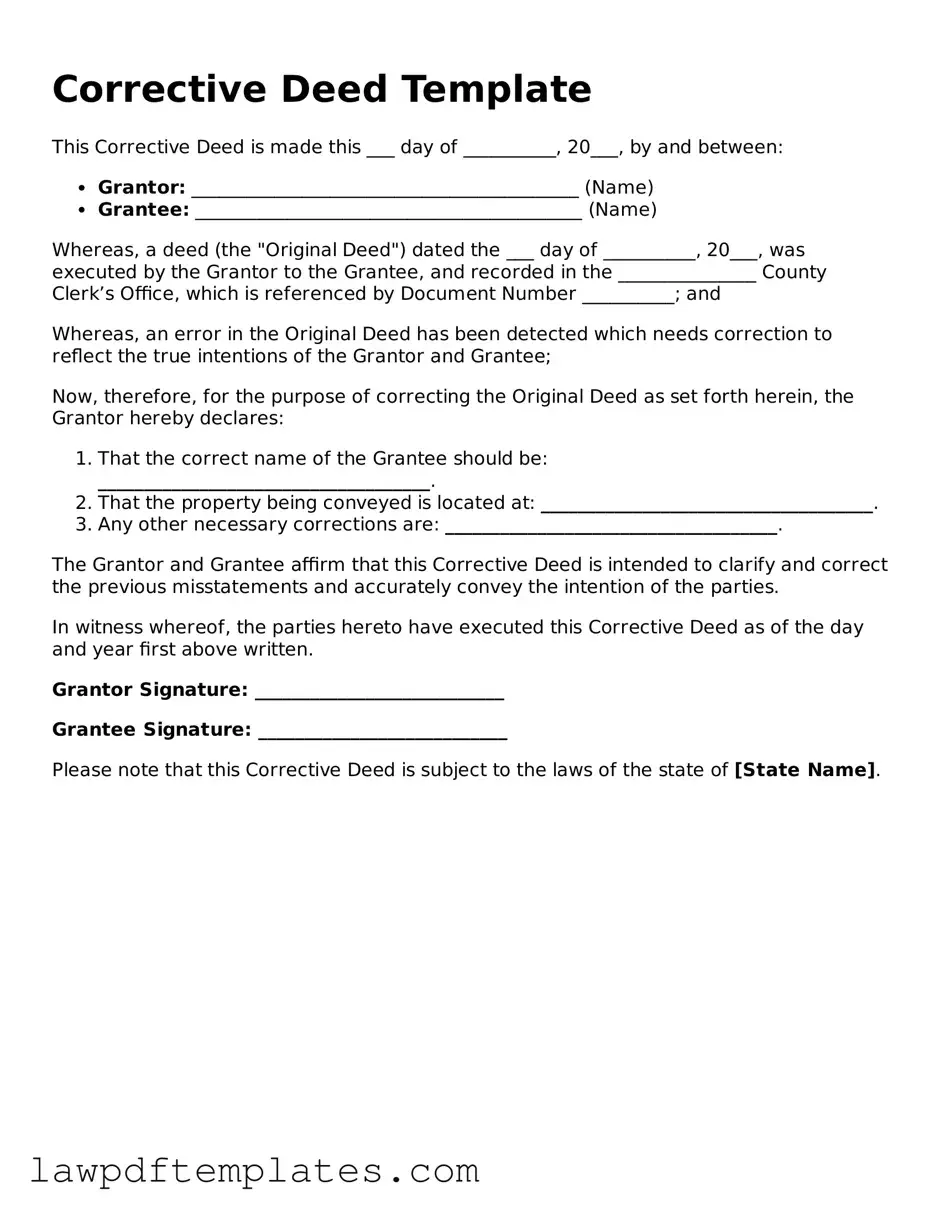Corrective Deed Template
This Corrective Deed is made this ___ day of __________, 20___, by and between:
- Grantor: __________________________________________ (Name)
- Grantee: __________________________________________ (Name)
Whereas, a deed (the "Original Deed") dated the ___ day of __________, 20___, was executed by the Grantor to the Grantee, and recorded in the _______________ County Clerk’s Office, which is referenced by Document Number __________; and
Whereas, an error in the Original Deed has been detected which needs correction to reflect the true intentions of the Grantor and Grantee;
Now, therefore, for the purpose of correcting the Original Deed as set forth herein, the Grantor hereby declares:
- That the correct name of the Grantee should be: ____________________________________.
- That the property being conveyed is located at: ____________________________________.
- Any other necessary corrections are: ____________________________________.
The Grantor and Grantee affirm that this Corrective Deed is intended to clarify and correct the previous misstatements and accurately convey the intention of the parties.
In witness whereof, the parties hereto have executed this Corrective Deed as of the day and year first above written.
Grantor Signature: ___________________________
Grantee Signature: ___________________________
Please note that this Corrective Deed is subject to the laws of the state of [State Name].
